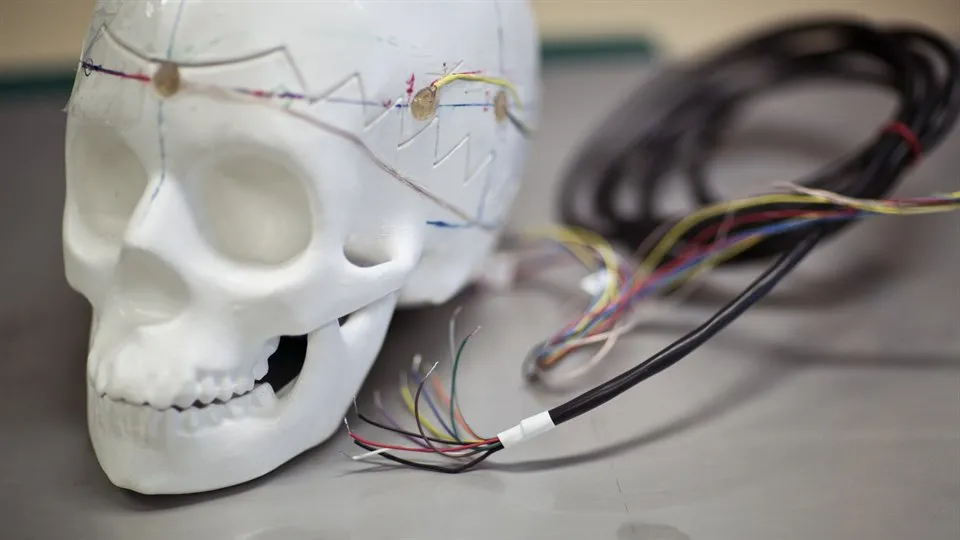Unique measurement method will provide safer head protection
Researchers at the Sports Tech Research Centre are currently working on developing test methods that manufacturers of head protection can use to construct safer products. With the help of an artificial skull and neck, the methods will be evaluated in the field.
For several years, researchers have investigated how the brain is affected by blows and external influences. Among other things, they have constructed a realistic brain with built-in sensors that are used to register shocks to an engineered skull in a lab environment.
"We have previously been bound to carry out our tests in the lab. What we are doing now is developing equipment that can be taken out into the field and we will test different helmets with varying cushioning and constructions. The second thing we do is to construct a helmet that will work in terms of safety," says Mikael Bäckström, center director at the Sports Tech Research Centre.
The project, which is being carried out in collaboration with researchers from KTH, Karolinska Institutet, Padua University and commercial actors such as Mips and Spektrum, aims to get one step closer to understanding how head injuries occur.
"We collaborate with professors at other universities and specialists such as doctors with knowledge of head trauma. We also work with Mips, whose helmet patent reduces the movement between the brain hemispheres in the event of external influences," says Mikael.
In the long term, there are also opportunities to develop a power-efficient, cheap and safe sensor in a small format that can be attached to a helmet to register what has happened to a person in the event of an incident.
"It is important to be able to classify the type of brain trauma that you have been exposed to, because rehabilitation looks different depending on the strain. We hope to be able to contribute with that knowledge through our research," says Mikael.
Safer head protection for everyone
In the collaboration between Mid Sweden University and Padua University, Italian master's student Ludovico Riello and his supervisor Andrey Koptyug at the Sports Tech Research Centre have further developed an artificial neck that is used to test different forces. The neck is adjustable and can therefore correspond to different body sizes.
The development of products that are used by humans is often based on the male anatomy. Both women and children have therefore been overlooked when it comes to developing different types of safety equipment, something this research project aims to remedy.
"Skulls weigh differently on different people and how the neck springs up depends a lot on the movement you get through the head. With the help of our world-unique artificial skull and neck, everyone's opportunity to get good protection increases," concludes Mikael.
The work has been carried out within the Augmented Sports project, which is carried out with the support of the European Regional Development Fund, and in which the municipality of Östersund is also involved as a financier.
Read more about Augmented Sports
